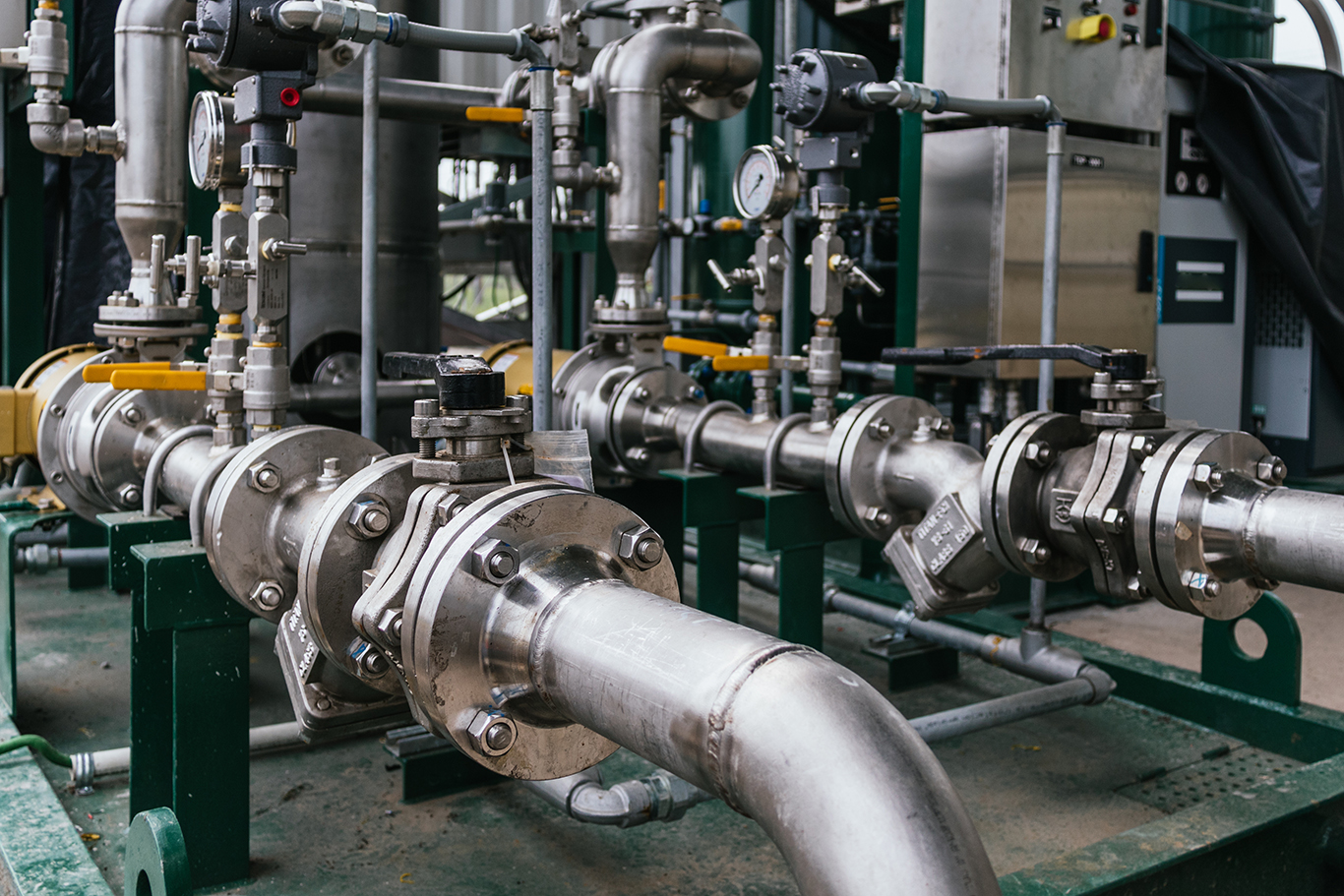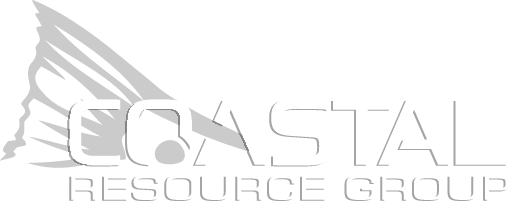Flanges and gaskets are key components in industrial piping systems. These seemingly simple pieces perform important roles by ensuring pipes connect firmly and safely, keeping fluids contained, and maintaining structural integrity within piping applications across various industries.
Role of Flanges in Industrial Applications
Flanges are metal plates with holes that bolt together, connecting pipes and equipment. They provide secure joints and simplify pipe maintenance by allowing quick disassembly. Flanges are common in many industries, including oil and gas, chemical processing, power generation, and water treatment.
The main functions of flanges in piping include:
- Connecting pipes securely.
- Providing access points for inspection and maintenance.
- Enabling system modifications without extensive dismantling.
- Distributing pressure evenly across joints.
Industrial Flange Types and Their Applications
Industrial flanges are available in various designs, each tailored to specific requirements concerning pressure, temperature, ease of installation, and maintenance. A clear understanding of the different types of flanges ensures appropriate selection and optimal performance in piping systems.
| Flange Type | Key Features | Typical Applications |
| Weld Neck Flanges | A tapered hub provides high strength and stress distribution | High-pressure and high-temperature piping systems |
| Slip-On Flanges | Slides over pipe and welded in place; easy installation | Lower-pressure systems, general piping applications |
| Threaded Flanges | Attaches to pipe via threaded connection, no welding required | Low-pressure systems, typically smaller pipe diameters |
| Blind Flanges | Seals pipe ends; no opening for fluid passage | System isolation, maintenance, inspection points |
| Lap Joint Flanges | Stub end with backing flange; allows rotation and alignment | Frequent maintenance or alignment-sensitive piping setups |
The Significance of Gaskets in Industrial Piping
While flanges provide mechanical strength and connection, gaskets play a critical role in maintaining secure and leak-free pipe joints. Gaskets, including specialized types like annular gaskets, are strategically placed between flange surfaces to ensure efficient sealing and prevent fluid leakage. Their primary functions within industrial piping include:
- Creating a reliable barrier to prevent leakage and environmental contamination.
- Compensating for imperfections on flange surfaces, ensuring tighter sealing.
- Providing resistance to fluctuations in temperature and pressure within piping systems.
- Enhancing safety by effectively containing hazardous or volatile fluids.
Gasket Types Used in Industrial Piping
Industrial gasket selection significantly influences the performance and reliability of piping systems. Different gasket types are designed to address specific operating conditions, including pressure, temperature, fluid compatibility, and flange surface configurations. According to industry standards, gaskets primarily fall into three categories: non-metallic, metallic, and semi-metallic, each suited to particular industrial scenarios.
| Gasket Type | Materials | Applications & Characteristics |
| Non-Metallic Gaskets | Rubber, Graphite, Fiber, PTFE | Ideal for low-pressure, low-temperature environments; flexible and conforms easily to irregular flange surfaces; suitable for moderate fluid conditions. |
| Metallic Gaskets | Entirely metal (e.g., stainless steel, carbon steel) | Designed for extreme pressure and high-temperature environments; excellent durability and strength; frequently used in oil & gas, chemical, and power generation industries. |
| Semi-Metallic Gaskets | Combination of metal and softer filler materials (e.g., spiral wound gaskets) | Versatile sealing for moderate to high-pressure and temperature applications; commonly employed in petrochemical plants and refineries due to resilience and flexibility. |
Selecting Flanges and Gaskets for Specific Industrial Applications
Choosing suitable flanges and gaskets involves careful evaluation of factors such as system pressure, temperature, fluid compatibility, flange surface finish, and maintenance needs. Selecting components that align closely with these criteria enhances operational reliability, reduces safety risks, and optimizes long-term performance.
Flange Selection
Proper flange selection is essential for maintaining the structural integrity and operational safety of piping systems. Industry professionals must consider several critical factors:
- Operating Conditions (Pressure and Temperature): High-pressure or high-temperature systems require sturdy flanges like weld neck flanges, typically crafted from stainless steel or alloy steel. For extreme environments, materials such as Inconel or Hastelloy may be necessary.
- Fluid Type and Material Compatibility: Corrosive fluids demand flanges made from corrosion-resistant materials, like stainless steel (SS 316) or copper-nickel alloys in marine settings. Carbon steel is suitable for less aggressive, non-corrosive fluids, while duplex steel serves well in acidic environments.
- Flange Standards and Dimensions: Ensuring adherence to industry standards like ASME B16.5, API 6A, or DIN guarantees safety and compatibility. Matching flange dimensions, bolt-hole patterns, and face types (raised face or flat face) to system specifications prevents structural and leakage issues.
- Application Environment: Use flanges manufactured from heat-resistant materials (polyamide 4.6, stainless steel grades 309/310) for high-temperature scenarios. For moist or corrosive environments, SS 316 is recommended.
- Cost-Effectiveness: Consider long-term durability versus initial investment. Weld neck flanges offer superior structural integrity but higher costs, whereas slip-on flanges provide an economical solution suitable for low-pressure scenarios.
Gasket Selection
For industry professionals, understanding how to choose the right gasket for flanged systems ensures robust joint integrity. Key considerations include:
- Operating Conditions: Gaskets must withstand maximum pressures and temperatures; metallic or semi-metallic types (e.g., spiral wound) are ideal for demanding conditions.
- Material Compatibility: Choose gasket materials compatible with system fluids:
- Non-metallic: Suitable for low-pressure corrosive fluids (e.g., PTFE).
- Metallic/semi-metallic: Appropriate for high-pressure and high-temperature applications.
- Gasket and Flange Compatibility: Soft gaskets pair well with flat-face or rough-surface flanges; metallic or spiral-wound gaskets suit raised-face or smooth flanges.
- Thickness and Stress: Select the appropriate thickness to maintain seal integrity under compression without compromising strength.
- Regulatory Compliance: Ensure gasket selection meets industry regulations, especially for hazardous fluid applications.
- Maintenance: Systems requiring frequent maintenance benefit from reusable gaskets and easily disassembled flange combinations, such as lap joint flanges.
Best Practices for Flange and Gasket Installation
Proper installation of flanges and gaskets ensures effective sealing, prevents leaks, and maintains system reliability. Consider the following best practices:
- Surface Preparation: Thoroughly clean flange surfaces, fasteners, and sealing faces from dirt, rust, and previous gasket residues using appropriate tools like brass wire brushes. Inspect surfaces carefully for defects like dents or pitting, repairing or replacing components as necessary.
- Flange Alignment: Ensure flanges are aligned precisely for even gasket loading. Avoid using pry bars or screwdrivers; instead, utilize specialized alignment tools to achieve proper parallelism without causing flange damage.
- Gasket Selection and Placement: Confirm the gasket matches flange dimensions, material requirements, and service conditions. Inspect the gasket carefully for defects, ensuring it is centered and installed dry, without pinching or applying chemical compounds unless specified by the manufacturer.
- Lubrication of Bolts: Apply a suitable lubricant to bolt threads, nuts, and washers, compatible with the operating environment. Avoid contaminating gasket surfaces with lubricants to preserve sealing integrity.
- Bolt Tightening Procedures: Use a calibrated torque wrench and follow a cross-bolt tightening sequence. Tighten bolts gradually in multiple stages (e.g., 30%, 60%, then 100% of recommended torque) to maintain uniform gasket compression. Always refer to gasket manufacturers’ torque guidelines specific to the application.
Adhering to these installation practices ensures reliable sealing performance, reduces system downtime, and enhances the service life of flanges and gaskets.
Quality Assurance and Standards Compliance
Compliance with industry standards such as ANSI, ASME, and API ensures flange and gasket reliability. Selecting products adhering to these standards guarantees safety, consistent quality, and compatibility across multiple piping systems.
Reliable Industrial Piping Solutions by Coastal Resource Group
Coastal Resource Group delivers reliable, high-quality industrial piping solutions tailored to the rigorous demands of Gulf Coast industries. With an extensive selection of HDPE pipes, flanges, gaskets, fittings, industrial hoses, and fusion equipment rentals, we ensure your projects remain efficient, safe, and on schedule.
Our dedicated support team is available 24/7, guaranteeing timely solutions whether you face routine maintenance or urgent repairs.
Need trusted piping components for your operation? Contact us today!


